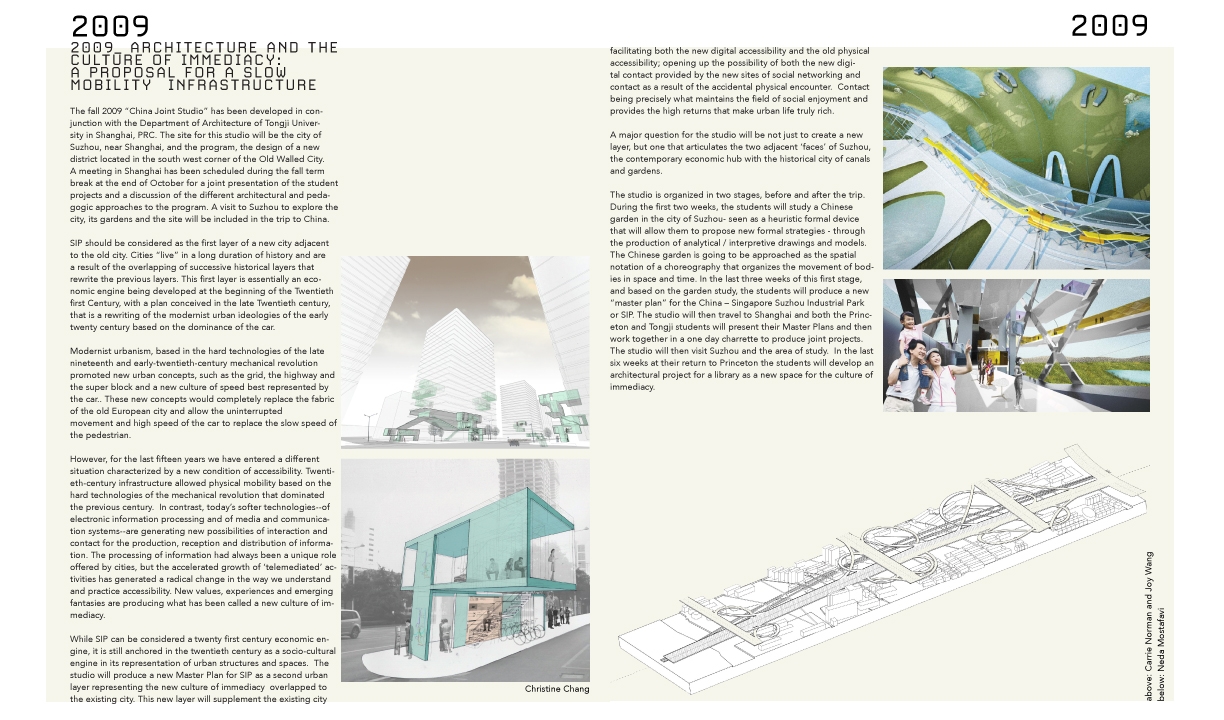The practice of architecture today is increasingly global in scope. It has never been more urgent for young architects to gain international experience. Cities all over the world are modernizing at an unprecedented pace: the design challenges of the 21st century will increasingly take place within this dynamic new urban context. Nowhere are these new realities more apparent than in the rapidly growing cities of contemporary China. Princeton University’s China Studio has developed over 12 years as a two way, cross-cultural exchange. It not only exposes western students to Chinese culture, it has also enabled educational exchanges and opportunities for Chinese students and faculty. The Studio is a constant source of creativity, generating new design ideas and new ways of looking at the city of the 21st century.
The 2008-10 “China Joint Studio” was developed in conjunction with the Department of Architecture of Tongji University in Shanghai, PRC. The site for these studios was the China-Singapore Suzhou Industrial Park in the city of Suzhou, near Shanghai, and the program, the design of a new Master Plan and an intermodal node. Every year in October, a select group of advanced graduate students from the School of Architecture travels to China to engage firsthand with its unique architecture, landscape, culture and urbanism. While in China, they participate in design workshops held in the Faculty of Architecture at Shanghai’s TongJi University. American and Chinese students work together, and present their work to a panel of local architects, academics and planners. It is this unique combination of on-site learning, cultural exchange and challenging design questions that makes Princeton’s China Studio so valuable to an architectural education today.



